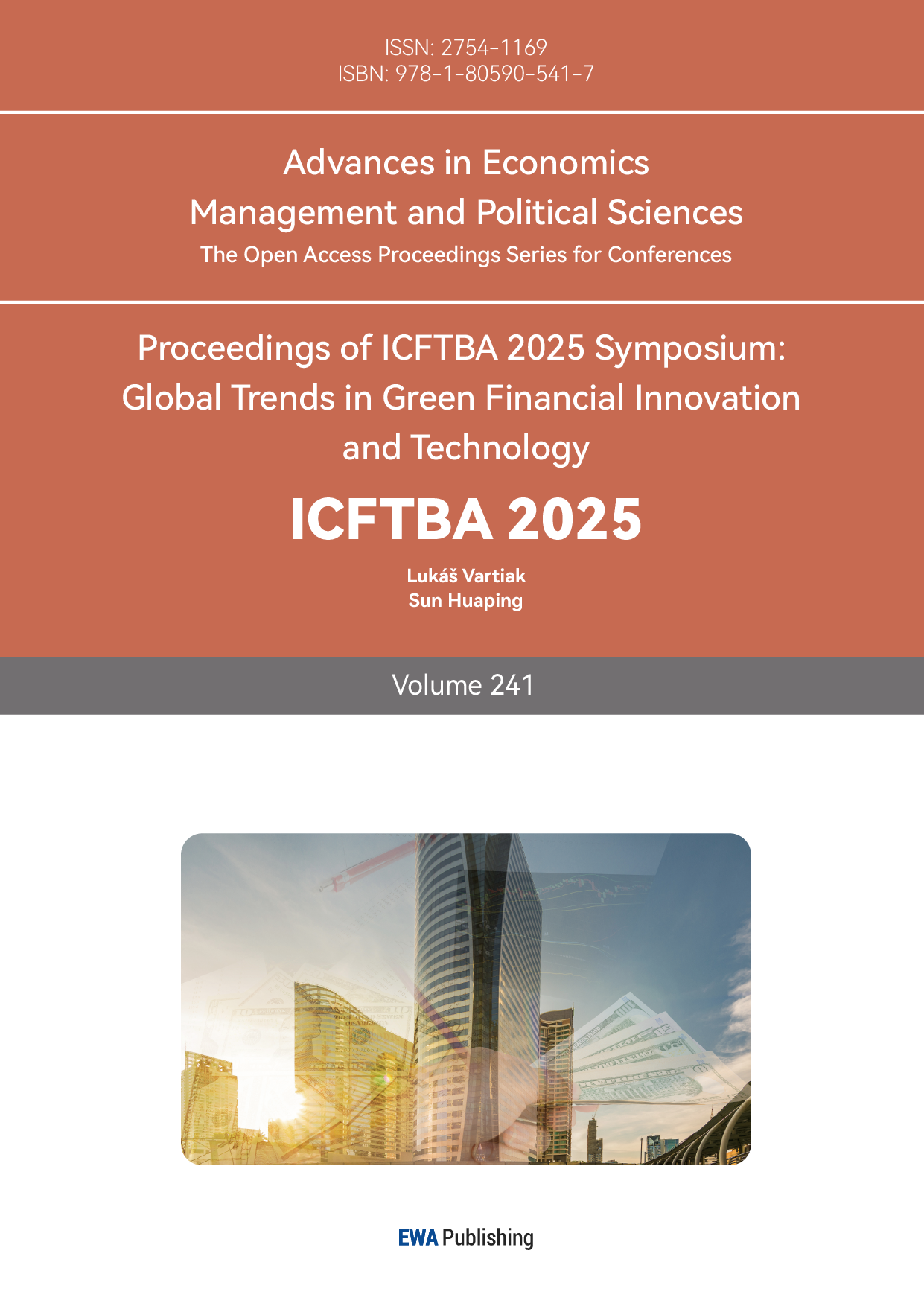References
[1]. Li, Z., & Huang, Y. (2024). Climate risk shocks and the “accelerator” effect on credit financing contraction. Finance Theory and Practice, 45(3), 2–10. https: //doi.org/10.16339/j.cnki.hdxbcjb.2024.03.001
[2]. Huang, H. H., Kerstein, J., & Wang, C. (2022). The impact of climate risk on firm performance and financing choices: An international comparison. In Crises and disruptions in international business: How multinational enterprises respond to crises (pp. 305–349). Cham: Springer International Publishing.
[3]. Ginglinger, E., & Moreau, Q. (2023). Climate risk and capital structure. Management Science, 69(12), 7492–7516.
[4]. Lemma, T. T., Lulseged, A., & Tavakolifar, M. (2021). Corporate commitment to climate change action, carbon risk exposure, and a firm's debt financing policy. Business Strategy and the Environment, 30(8), 3919–3936.
[5]. Jung, J., Herbohn, K., & Clarkson, P. (2018). Carbon risk, carbon risk awareness and the cost of debt financing. Journal of Business Ethics, 150(4), 1151–1171.
[6]. Wilby, R. L., et al. (2009). A review of climate risk information for adaptation and development planning. International Journal of Climatology: A Journal of the Royal Meteorological Society, 29(9), 1193–1215.
[7]. Chen, S., Xu, L., & Wu, H. (2024). Theoretical explanation and implementation paths of green and low-carbon transformation of China’s industrial chains under the “dual carbon” targets. Guangdong Social Sciences, (5), 63–74+286.
[8]. Zhang, X., Wan, G., Zhang, J., et al. (2020). Digital economy, financial inclusion and inclusive growth. China Economist, 15(3), 92–105. https: //doi.org/10.19602/j.chinaeconomist.2020.05.07
[9]. He, X., & Ma, J. (2022). Impacts of carbon neutrality on macroeconomic development. Financial Forum, 27(5), 3–7. https: //doi.org/10.16529/j.cnki.11-4613/f.2022.05.008
[10]. Matsumura, E. M., Prakash, R., & Vera-Muñoz, S. C. (2014). Firm-value effects of carbon emissions and carbon disclosures. The Accounting Review, 89(2), 695–724.
[11]. Li, J., Peng, Y., & Wang, W. (2023). Can green credit policies promote the development of green enterprises?—From the perspective of risk-taking. Financial Research, (3), 112–130.
[12]. Li, Z., & Qin, J. (2020). Financing constraints and liquidity provision of trade credit channels: Evidence from heterogeneous firms. Nankai Journal (Philosophy and Social Sciences Edition), (6), 59–70.
[13]. Du, J., & Ran, L. (2025). Spillover effects of peer climate risk disclosure: Evidence from corporate financing costs. Accounting Monthly, 46(16), 52–58. https: //doi.org/10.19641/j.cnki.42-1290/f.2025.16.008



